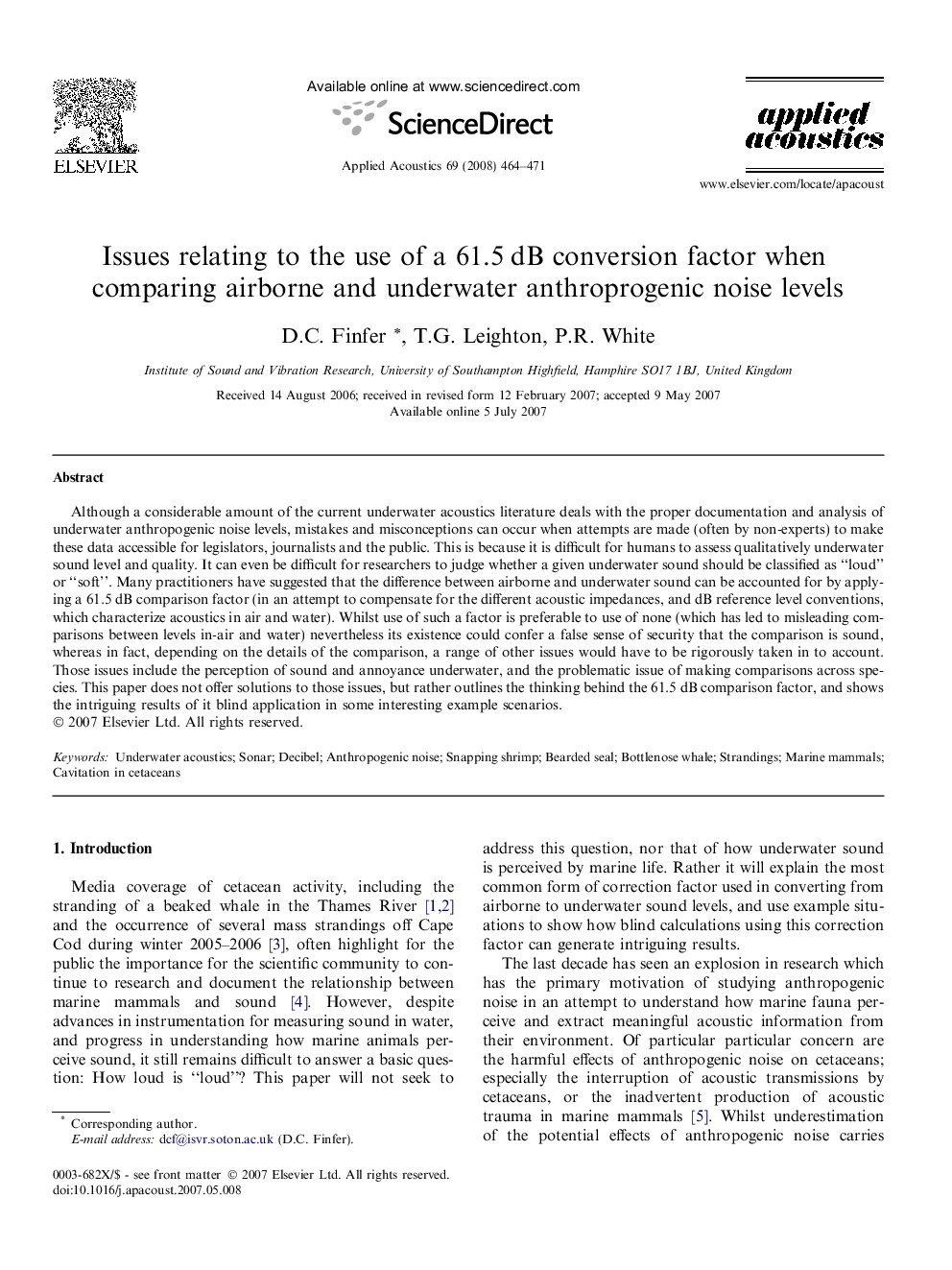| کد مقاله | کد نشریه | سال انتشار | مقاله انگلیسی | نسخه تمام متن |
|---|---|---|---|---|
| 754936 | 895905 | 2008 | 8 صفحه PDF | دانلود رایگان |

Although a considerable amount of the current underwater acoustics literature deals with the proper documentation and analysis of underwater anthropogenic noise levels, mistakes and misconceptions can occur when attempts are made (often by non-experts) to make these data accessible for legislators, journalists and the public. This is because it is difficult for humans to assess qualitatively underwater sound level and quality. It can even be difficult for researchers to judge whether a given underwater sound should be classified as “loud” or “soft”. Many practitioners have suggested that the difference between airborne and underwater sound can be accounted for by applying a 61.5 dB comparison factor (in an attempt to compensate for the different acoustic impedances, and dB reference level conventions, which characterize acoustics in air and water). Whilst use of such a factor is preferable to use of none (which has led to misleading comparisons between levels in-air and water) nevertheless its existence could confer a false sense of security that the comparison is sound, whereas in fact, depending on the details of the comparison, a range of other issues would have to be rigorously taken in to account. Those issues include the perception of sound and annoyance underwater, and the problematic issue of making comparisons across species. This paper does not offer solutions to those issues, but rather outlines the thinking behind the 61.5 dB comparison factor, and shows the intriguing results of it blind application in some interesting example scenarios.
Journal: Applied Acoustics - Volume 69, Issue 5, May 2008, Pages 464–471